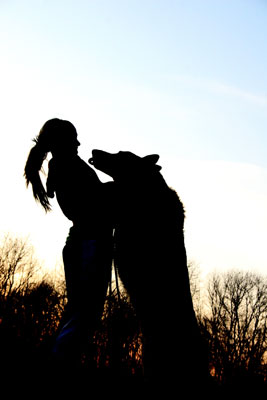All Nonfiction
- Bullying
- Books
- Academic
- Author Interviews
- Celebrity interviews
- College Articles
- College Essays
- Educator of the Year
- Heroes
- Interviews
- Memoir
- Personal Experience
- Sports
- Travel & Culture
All Opinions
- Bullying
- Current Events / Politics
- Discrimination
- Drugs / Alcohol / Smoking
- Entertainment / Celebrities
- Environment
- Love / Relationships
- Movies / Music / TV
- Pop Culture / Trends
- School / College
- Social Issues / Civics
- Spirituality / Religion
- Sports / Hobbies
All Hot Topics
- Bullying
- Community Service
- Environment
- Health
- Letters to the Editor
- Pride & Prejudice
- What Matters
- Back
Summer Guide
- Program Links
- Program Reviews
- Back
College Guide
- College Links
- College Reviews
- College Essays
- College Articles
- Back
Greyhound Rescue MAG
A dog stepped out of the truck. It was a tractor-trailer – the kind that's driving on some highway in the Midwest right now, hauling 10,000 packages of instant noodles.
“We might get to wash dogs,” said my teacher, sounding hopeful.
I looked back at the truck and the dogs as we walked along the gravel toward the low, rectangular building. Inside, the walls were brown. Roses lay on a low table, along with an assortment of frosted donuts. Volunteers in the front room glanced out the door at the dogs.
“Do you want a donut?” one asked.
“No, thank you.”
We exchanged smiles. I could hear barking from the next room.
My friend was talking to the volunteers. They were older than us. She was telling a story I'd already heard, about how her family left their dog in a crate, went on vacation, and the person who was supposed to come to feed and walk it never came. Miraculously, the dog survived.
My teacher emerged from the corner of the room. “We can walk the dogs now,” he said.
I made gloves out of my pockets. “Okay.”
“Great!” my friend said.
“I'll show you to the next room,” said a volunteer wearing a cheerful shirt with a picture of a dog on it.
“The greyhounds are used to being crated all day,” she added, holding open the door as we filed past her, “so you'll walk them once or twice around the outside of the fence, then put them back in their crates. Here, pick a leash.”
We took brightly colored leashes from a wooden peg.
“The females are on the top and the males are on the bottom,” she went on. “They are all retired racing dogs that just arrived today. Oh, and we've got a woman coming in to return her dog today, so try to be nice to her and smile.”
As we walked into the next room, I brought my hand to my face to cover my nose. Urine ran down the sides of the cages, which were stacked on top of the other. Most of the greyhounds fidgeted. Some of them stared blankly. Skin was missing from some of their tails, like dinosaur bones in a museum. They had open sores on their emaciated bodies.
My friend had already coaxed a tan greyhound from a bottom cage. I noticed one of the brindle-colored males was gazing somewhere over my left shoulder and thwacking his scabbed tail against the side of his cage. I opened it a crack and struggled to get the leash around his neck. Then we went outside.
The leash tightened on the back of my hand and we lurched forward.
“Yeesh!”
It seemed like every ounce of this dog's being was focused on getting to the fence. I called him by his name, but it was more just a word than his name. Who named these dogs, anyway? By the time we finished our first lap, I'd forgotten it.
We kept marching. All the while I kept trying to talk to him and pet him, but he was unresponsive, just straining against the leash, staring at nothing and everything with hollow eyes.
Greyhounds have traditionally been bred to be racing dogs since the United States government initially permitted dog racing in hopes it would generate additional tax revenue for states. Each year, about 50,000 greyhounds are bred for racing, but only about 15,000 reach the tracks. The rest are “retired” – shot or used for breeding. Trainers use live rabbits for bait so greyhounds develop a “taste for blood.” If a greyhound has no predisposition to kill, some trainers place them in cages with other live animals until hunger drives them to attack.
In 2011, trainer Ronald John Williams was sentenced to five years in jail after being charged with 37 counts of animal cruelty. Thirty-three greyhounds in his care were starved to death and duct tape was found around three of the dogs' necks. My rescue received one of his dogs, and I saw it arrive in a large truck with several others. Although the rescue shelter does not take an official position on dog racing, the volunteers display a rose for each dog killed so that they will never be forgotten.

Similar Articles
JOIN THE DISCUSSION
This article has 1 comment.
